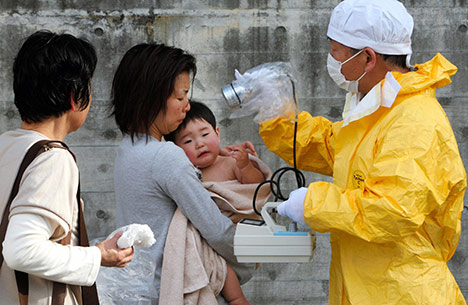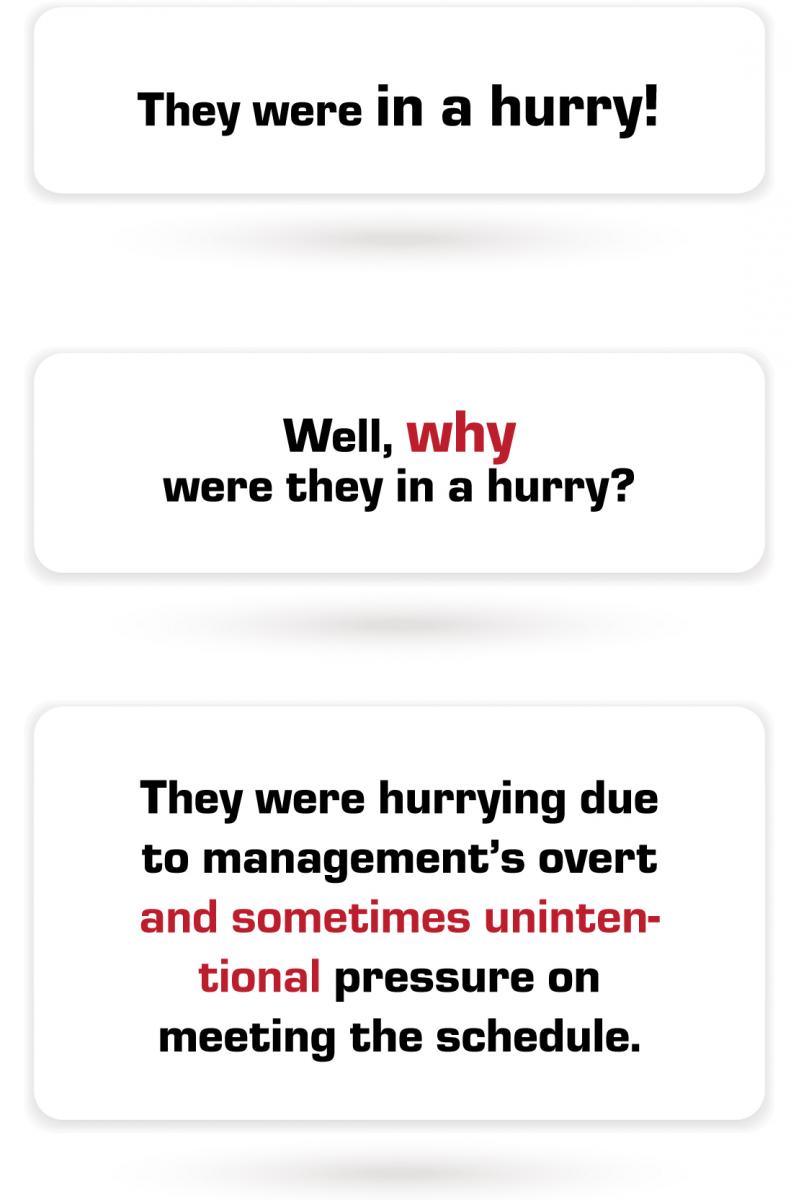Turn up to Learn: Leadership in High-hazard Industries
In 2003 The Columbia Accident Investigation Board (CAIB) released a final report on the causes of the disastrous loss of the Space Shuttle on February 1 of that year. The commission found a number of mechanical fixes, but ultimately concluded that NASA's management system “is unsafe to manage the shuttle system beyond the short term and that the agency does not have a strong safety culture.” The Board determined that physical and organizational causes played an equal role in the Columbia accident: “the NASA organizational culture had as much to do with the accident as the foam that struck the Orbiter on ascent.”
In February 2008, in Port Wentworth, Georgia, 14 people were killed and 42 injured (many severely burned) when a dust explosion occurred at the Imperial Sugar Factory, the second-largest sugar factory in America. The refinery was often described as antiquated and used decades-old equipment. The inferno, resulting from unsafe operating methods, lasted for seven days. Firefighters attributed the fire’s longevity to the use of creosote (commonly known as fat lighter, due to its volatility) as a sealant throughout the wooden tongue-and-groove structure of the facility’s ceiling. The U. S. Chemical Safety Board report stated that the company’s management had long known of the hazards associated with combustible sugar at the plant, had neglected to correct unsafe conditions, and that the accident was entirely preventable. OSHA subsequently fined Imperial for more than 200 safety violations in its refineries.
 According to the Japanese news source Asahi Shimbun, a senior official of a sub-contracting construction company admitted that he instructed four workers to use lead plates to shield their dosimeters—required safety equipment that monitors radiological exposure. He wanted the devices to report lower radiation readings inside the Fukushima No. 1 nuclear power plant in the months following the March 2011 meltdown disaster. Even following the disaster, he circumvented safety so the crew could work longer without exceeding the annual limit of radiation exposure set by the government.
According to the Japanese news source Asahi Shimbun, a senior official of a sub-contracting construction company admitted that he instructed four workers to use lead plates to shield their dosimeters—required safety equipment that monitors radiological exposure. He wanted the devices to report lower radiation readings inside the Fukushima No. 1 nuclear power plant in the months following the March 2011 meltdown disaster. Even following the disaster, he circumvented safety so the crew could work longer without exceeding the annual limit of radiation exposure set by the government.
At first glance, the questions that come to mind after reading these few industrial accident examples are simply, “Why in the world would someone do such a thing? Why would a company make such poor decisions that affect the safety and lives of others?” Yet, there are thousands of such examples throughout history and in current times from which to choose.
 After almost every major industrial accident, investigators discover that an overreliance or overconfidence existed in the systems in place to prevent catastrophic events and hazardous work environments. In most catastrophic events, people would assert on the day before, that what happens the next day is not even physically possible. Such themes appear common to nearly every major accident. Another common theme found in major accident investigations is that bad news doesn’t travel up the chain of command, meaning that for quite some time people have concerns or they’ve noticed something but for whatever reason that news doesn’t reach the executive level. In fact, often the front-line workers are well aware of potential calamity, when people in leadership roles are not.
After almost every major industrial accident, investigators discover that an overreliance or overconfidence existed in the systems in place to prevent catastrophic events and hazardous work environments. In most catastrophic events, people would assert on the day before, that what happens the next day is not even physically possible. Such themes appear common to nearly every major accident. Another common theme found in major accident investigations is that bad news doesn’t travel up the chain of command, meaning that for quite some time people have concerns or they’ve noticed something but for whatever reason that news doesn’t reach the executive level. In fact, often the front-line workers are well aware of potential calamity, when people in leadership roles are not.
Investigations have shown that major industrial accidents also share this common thread: a whisper at the top of the house becomes a shout at the front line. This means that concerns about expense control, for example, are interpreted as we can’t spend any money on preventative maintenance or production takes precedent over safety.
Since these common factors have shown up time and again in these investigations, it’s time that senior leaders recognize their key role in preventing such events, because in most cases they are reading the wrong script. In a high-hazard industry, this confusion of leadership’s role in safety is also high stakes.
A high-hazard industry is any industry or venture that operates using specialized processes with significant, inherent risks of harm to people or the environment. Some of the most prominent such industries that fit that category are aerospace, nuclear energy, petrochemicals and mining. In retrospect, most catastrophic industrial disasters are a unique combination of major systems failures and human error that come together in a perfect storm. But also in retrospect, so many of those storms did not have to happen.
Intention Versus Impact
A specific kind of safety leadership is required in high-hazard industries and that is that senior leaders need to work to ensure that their systems and processes are working effectively. Unfortunately, most leaders interpret this as going out and inspecting the front-line workers. Because of this propensity on the part of leadership, most people out in the field don’t experience interactions with senior leadership as the slightest bit helpful. They view these visits as an audit during which the senior leadership shows up looking for something wrong: they’re checking, evaluating, and investigating until they can find a problem. Very probably the reinforcement history of many leaders includes coming back with the symbolic shiny medal of “Look what I found!” This does not say to the performers that leadership is trying to help or that leadership is concerned about the workforce’s well-being or safety.
Leaders will never know what is really going on until they are able to establish trusting relationships demonstrated through credible action, rather than simply working on their own agendas. Did you ever watch the television show, Undercover Boss? In each episode of the program, the head of a large corporation joins his or her own workforce disguised as a new-hire or trainee. During a very short period of time he or she learns much more about the reality of the company and its employees out in the field than ever learned from the comfort of corporate headquarters.
 Again there’s a commonality: all of those senior leaders tend to be flabbergasted by what folks have to go through, how hard they work, and how they are negatively impacted by systems, policies, and procedures that leadership has put in place. The key factor here is that the leader must appear in disguise to obtain critical information that is freely shared between peers, who in order to get their jobs done, must often work around some company-imposed policies that are irrelevant. Doesn’t having to be in disguise indicate a lack of trust between employees and leadership?
Again there’s a commonality: all of those senior leaders tend to be flabbergasted by what folks have to go through, how hard they work, and how they are negatively impacted by systems, policies, and procedures that leadership has put in place. The key factor here is that the leader must appear in disguise to obtain critical information that is freely shared between peers, who in order to get their jobs done, must often work around some company-imposed policies that are irrelevant. Doesn’t having to be in disguise indicate a lack of trust between employees and leadership?
Leadership should not be in the role of auditing the performer but rather listening to the performer, and asking questions such as, “Are there elements of your job that just don’t make any sense to you?” But to get a helpful answer to that question, there’s got to be some trust that you’re not out trying to make trouble. Trust must be built, and that takes time, systematic effort, and consistently positive consequences.
Management by Walking Around sometimes does more harm than good. This happens when a leader gets the idea that he/she should go out and resolve performance problems. Leave that to local management! Leadership’s role when talking with employees is not to send a message but to receive one. As one oilfield worker put it, “I know how to answer their questions. I’ve been in this game long enough to tell them exactly what they want to hear. I don’t have to be dishonest; I’ll just tell them the minimum they need to know and then they’ll move on. But if somebody is really interested, I’ll tell them whatever they need to know all day long.” It’s leadership’s job to convince employees that they really do want to know about the reality of the work from the people who do the work. As Aubrey Daniels, Founder of ADI, says, “One of the best ways to build relationships or reinforce somebody is to let them teach you.”
Small Steps to Big Change
Most organizations’ leaders recognize the value of being more proactive, being in a preventative mode rather than a reactive mode, and yet they continue to fall into the trap of being urgent responders. Russell Justice, retired Performance Management guru from Eastman Chemical, explains it this way: “The performance an organization is getting today is perfectly in line with the consequences in place in the environment.” If your leadership team is chronically in a firefighting mode, it’s because somehow they’ve been reinforced for that behavior, and you need to recognize and accept your contributions to that. While working with a large plastics plant, we did an analysis on the rewards of firefighting there. They soon realized they had just promoted somebody to corporate who was a great firefighter only to find out he was also an arsonist, or fire-starter. His poor planning generated more fires to fight but he emerged as the hero when he rushed to put the fires out.
I encourage leaders to use ADI’s PIC/NIC Analysis® (an exercise that categorizes consequences as positive/negative, immediate/future, and certain/uncertain) when they do root cause analyses. Very often a root cause analysis following an event targets “individual choice” or “lack of attention to detail” or other things that make it easy to park the issue in the problem-of-the-performer space. But when we do a PIC/NIC Analysis®, we tend to unveil broader systemic issues:

Leaders, think of your role, your job when out in the field as discovering what’s happening, what’s really going on and to better understand the impact of some of your decisions, policies and systems. Don’t try to audit the individual or check up on compliance. You shouldn’t be a source of discipline or punishment. If you see something wrong then have a conversation with the site leader rather than intervening directly. You really should be a source of reinforcement while you’re there. That’s difficult to do and it’s so countercultural to what many leaders have learned.
Leaders must ask questions and listen to the answers. They must show that issues are then acted upon, that their own policies and procedures must continually be evaluated, and that they learn the true workings of the organization from the people who are implementing the policies. People usually see leadership presence as an indication that something is wrong or a glad-handing to meet the masses. As a leader, you can establish your presence so that when people see you coming they don’t expect that there’s an issue or problem, but rather there’s a good chance that things might be going well. It’s not easy, but without donning a disguise, it might be your only chance to truly be a proactive leader. If you truly turn up to learn, you can avert an accident waiting to happen.
Published September 21, 2012


